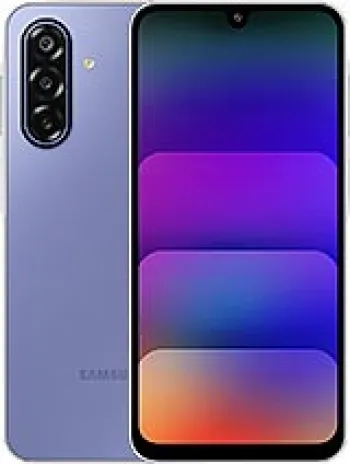
Network
The Samsung U100 supports GSM technology, making it compatible with the GSM 900, 1800, and 1900 MHz frequency bands. This provides the device with basic telecommunication capabilities across a wide range of global GSM networks. Additionally, the device supports GPRS and EDGE technologies, both at Class 10, allowing for basic mobile data connectivity that was suitable for the device's feature phone status during its time.
Launch
The Samsung U100 was officially announced in February 2007. Despite the innovations it introduced at the time, the device has since been discontinued, reflecting the rapid advancements and changes in mobile technology over the years.
Body
With dimensions of 105.5 x 50 x 5.9 mm and a weight of only 57 grams, the Samsung U100 was remarkably compact and lightweight. The phone's ultra-slim profile, as well as its lightweight build, made it one of the market’s most portable options during its release period. The device was designed to be practical and easy to handle, using a Mini-SIM slot for connectivity.
Display
The Samsung U100 features a TFT display capable of rendering 256K colors. The screen measures 1.93 inches, which was adequate for the feature phones of its era, offering a resolution of 220 x 176 pixels. The display achieved a pixel density of approximately 146 ppi, allowing for basic visibility and readability of text and images, although quite limited by modern standards.
Memory
The internal memory of the Samsung U100 is 70MB, and unlike many modern smartphones, it does not have a card slot for expandable storage. The phone’s memory is sufficient for storing contacts, call records, and a limited amount of media. The phonebook could hold up to 1000 entries with photocall features, and the call log could store up to 30 dialed, received, and missed calls.
Main Camera
Equipped with a 3.15 MP single main camera, the Samsung U100 was capable of capturing photos and CIF quality videos. While this might seem modest by today’s standards, it was quite innovative for a feature phone in 2007, offering users a rudimentary photography experience.
Sound
The device includes a loudspeaker and supports various alert types, including vibration and downloadable polyphonic and MP3 ringtones. However, it excludes a 3.5mm audio jack, which was a common feature in other devices during that period.
Comms
The Samsung U100 lacked Wi-Fi and radio capabilities but came with Bluetooth 2.0 with A2DP support, allowing users to connect wireless headphones and other compatible devices. USB connectivity was available through a 2.0 connection, facilitating basic data transfer operations.
Features
As a feature phone, the Samsung U100 provided essential utilities such as SMS, EMS, MMS, and email messaging. It had a WAP 2.0/xHTML browser for basic internet browsing of the time. The phone offered pre-installed games with the option to download additional ones, and Java support with MIDP 2.0 enhanced its functionality through downloadable applets.
Battery
The device was powered by a removable Li-Ion 690 mAh battery. It could last up to 185 hours on standby and offered a talk time of up to 2 hours and 30 minutes. Although limited by today’s standards, this battery performance was considered serviceable for basic telephony and text messaging during its lifecycle.
Miscellaneous
Color options for the Samsung U100 included Blue/Violet, Gray/Black, and Gold. The SAR values were recorded at 0.77 W/kg for the head and 0.59 W/kg for the body, with an SAR EU level of 0.33 W/kg for the head. At launch, it was priced around 80 EUR, reflecting its status as a feature phone despite its slim design and feature set.
Summary
The Samsung U100 represents a unique period in mobile phone history where design innovation and functionality began evolving rapidly. Despite the lack of advanced features that characterize modern smartphones, the U100 exemplified what a highly portable and aesthetically pleasing device of its time could offer. Its ultra-thin design, lightweight construction, and basic multimedia functionalities made it an appealing choice for users seeking something simple yet stylish.
Key Features of Samsung U100
- Ultra-slim design with dimensions of 105.5 x 50 x 5.9 mm and weight of only 57 g
- 3.15 MP primary camera with CIF video recording capabilities
- Bluetooth 2.0 with A2DP support for wireless audio streaming
- Large phonebook memory with space for 1000 entries and photocall feature
- Internal memory of 70MB for storing contacts and data
- Supports SMS, EMS, MMS, and Email messaging options
- Lightweight construction, making it easy to carry and handle
- Available in multiple color options: Blue/Violet, Gray/Black, and Gold
Samsung U100 Key Disadvantages
- No external memory card slot, limiting storage expansion.
- Lack of 3.5mm headphone jack, requiring adapters for standard headphones.
- No Wi-Fi connectivity for internet access.
- No positioning or GPS capabilities.
- No built-in radio feature.
- Very small battery capacity (690 mAh) leading to limited talk time.
- No front-facing camera for selfies or video calls.
- The screen size of 1.93 inches is relatively small by modern standards.
- Discontinued status, which may affect support and repair options.

View Also
More Phones
All Rights Reserved +14266 Phones © Mobilawy 2025

























